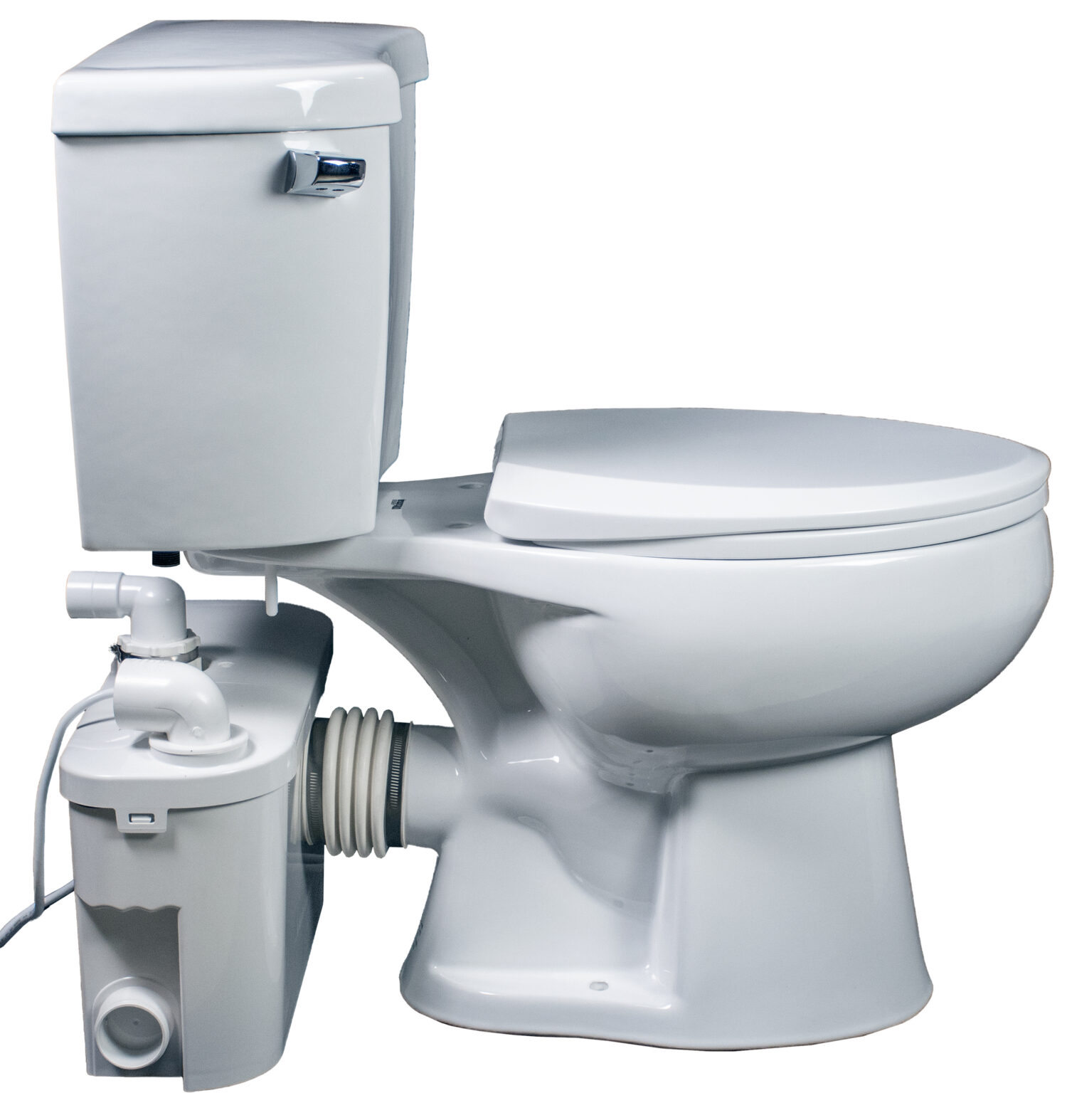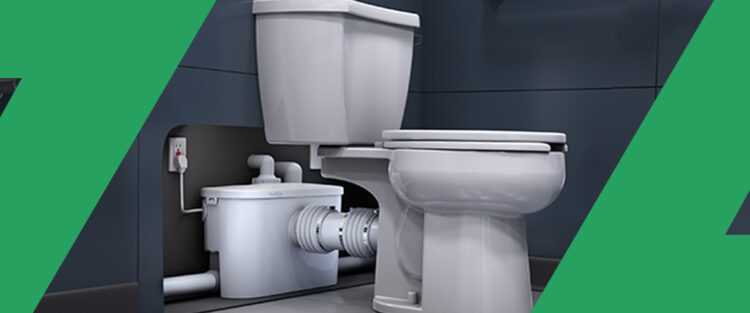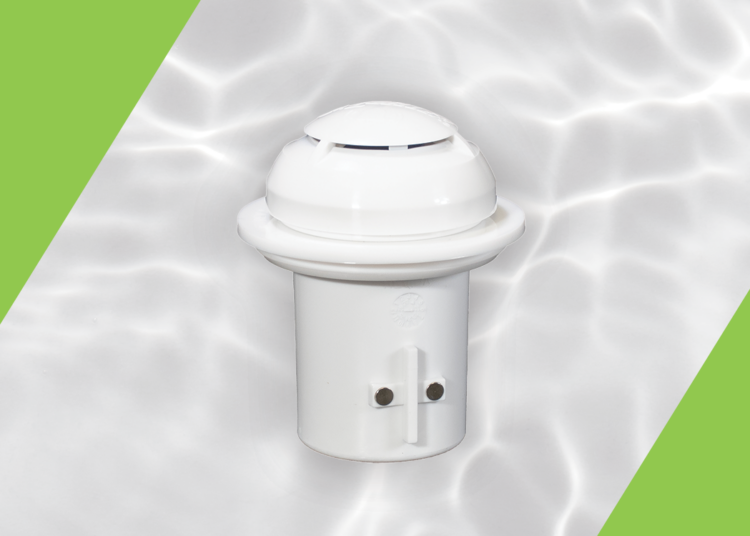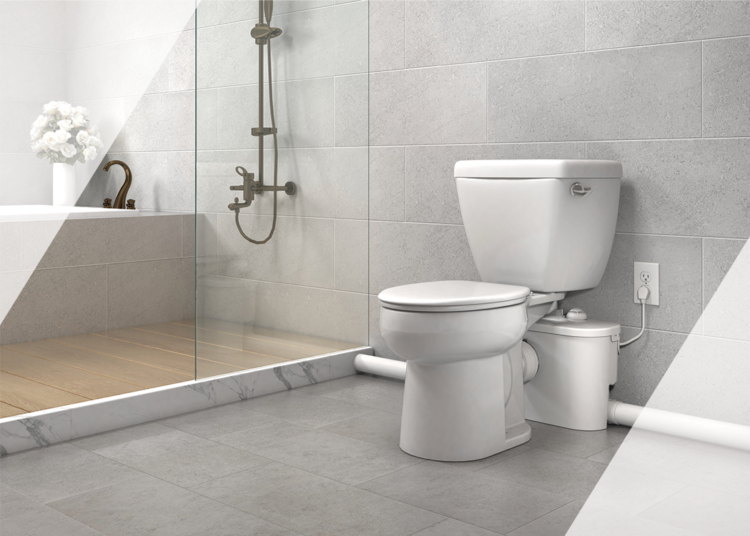TL;DR / Quick Answer: Yes, you can install a toilet in any basement using a system like Zoeller Qwik Jon®—no need to break concrete, and it works even if your sewer main is higher than your basement
The young couple had saved for years to buy their dream home in a dense Hanoi neighborhood, but there was a serious problem. They had a beautiful, spacious basement they wanted to convert into a small apartment for extra income, but every contractor told them the same thing: putting a bathroom down there was impossible due to the existing plumbing issues . The main sewer line was too high, the concrete floor was too thick to break, and the cost of traditional plumbing was simply out of reach.
I know how stressful it feels when your home’s potential is limited by plumbing challenges. For over 15 years, I’ve helped hundreds of families learn how to install a toilet in a basement bathroom across Vietnam. The good news is, this problem is completely solvable. Modern upflush technology has changed everything, making it possible to install a bathroom almost anywhere without expensive, destructive concrete work.
Key Benefits of Learning How to Install a Toilet in a Basement
- No concrete breaking required – Install below your main sewer line
- Upflush systems like the Zoeller Qwik Jon® use grinder pumps to move waste upwards
- Weather-resistant design for Vietnam’s humid climate and monsoon season
- Cost-effective and less disruptive than traditional below-grade plumbing
- Complete bathroom solution – add toilet, sink, and shower to any basement space
Why Traditional Methods Fail When Installing a Toilet in a Basement
For generations, the biggest challenge with how to install a toilet in a basement has been gravity, and careful planning can help overcome this . Traditional plumbing needs a downward slope to carry waste to the main sewer line. In a basement, you’re already at the lowest point of the house, often below the sewer main.
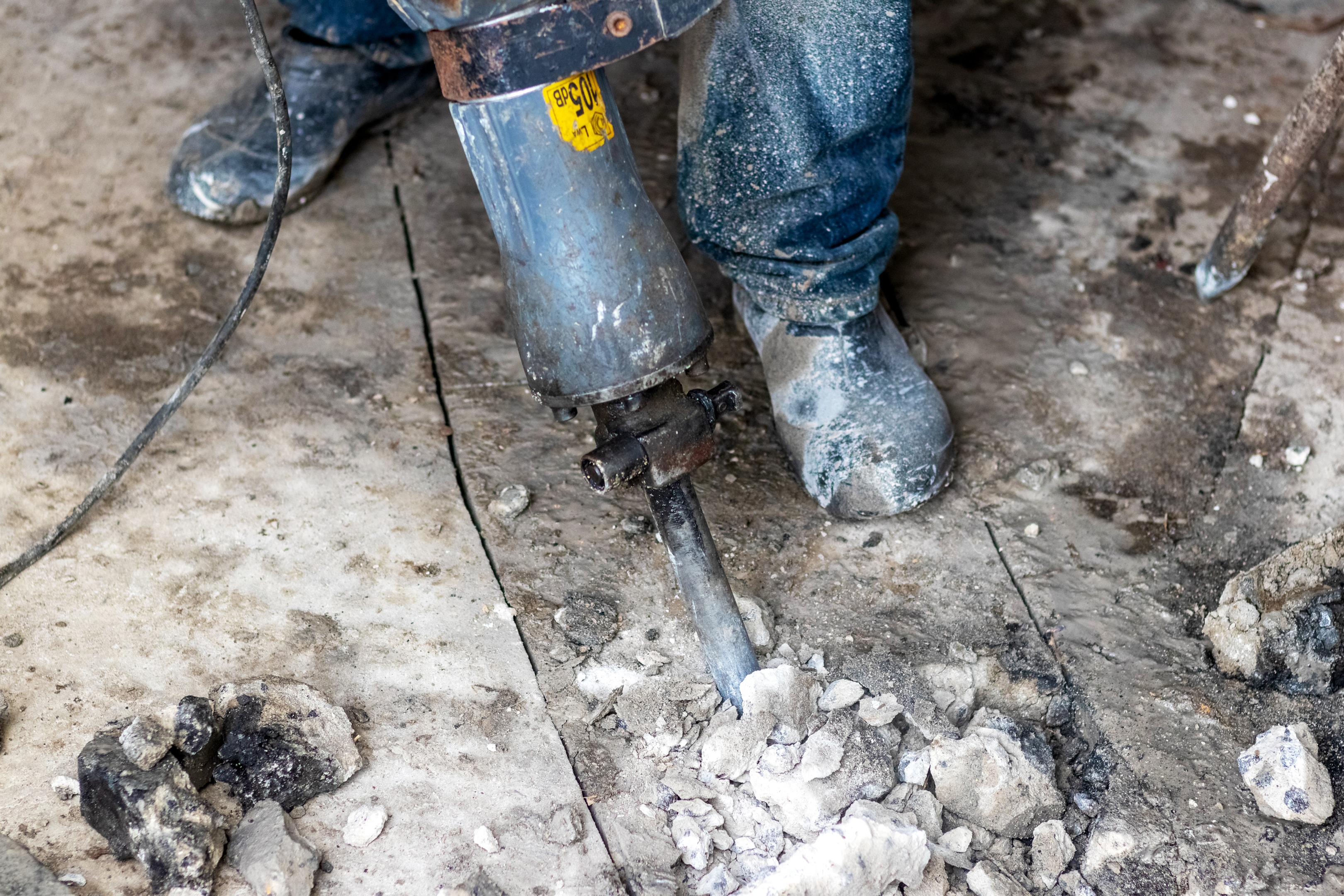
The old solution was to jackhammer the concrete floor—a messy, loud, and incredibly expensive process. You’d have to dig trenches, lay new pipes at the correct slope, and then pour new concrete. In Vietnam’s dense urban areas, this kind of work creates structural risks and necessary permits headaches. Our high water tables, especially during monsoon season, create serious risks of backflow and flooding if the system isn’t perfect.
| Traditional Plumbing | Upflush System (e.g., Zoeller Qwik Jon®) | |
|---|---|---|
| Requires breaking concrete? | Yes | No |
| Can install below main sewer line? | No | Yes |
| Time to install | Several days to weeks | 1 day (sometimes less) |
| Risk of basement flooding/backflow | Higher (needs perfect slope/drainage) | Lower (sealed unit, pumps waste up) |
| Permits/structural risks | High | Minimal |
| Cost | $$$$ (labor + materials) | $$ (higher unit cost, but huge labor savings) |
| Disruption to home | Major mess, noise, dust | Minimal—above-floor install |
Bottom Line: Upflush systems like Qwik Jon® are designed to solve the classic basement bathroom challenge, with less hassle, less risk, and faster results.
The Upflush Revolution: How Zoeller Qwik Jon® Solves Basement Toilet Installation
Here’s the breakthrough for how to install a toilet in a basement: you don’t need to rely on gravity anymore. The Zoeller Qwik Jon® system works like a powerful helper that lives behind your toilet.

When you flush, instead of waste flowing down, it enters a sealed unit equipped with a grinder pump. This macerator works like a household garbage disposal, breaking down waste before it’s pumped away through a smaller drain line.
As Better Homes & Gardens and Today’s Homeowner both explain, upflush (or “macerating”) toilets let you add a bathroom to almost any basement, without breaking concrete or reworking main sewer lines.
Unlike competitors designed for light use, the Qwik Jon® is engineered to handle a full bathroom—toilet, sink, and shower—with reliability built on our 86-year legacy. Its sealed construction is crucial for tropical climates, preventing moisture damage and containing odors.
| Feature | Zoeller Qwik Jon® | Saniflo SaniAccess | Liberty Ascent II |
|---|---|---|---|
| Pump Capacity | Up to 15 ft vertical, 150 ft horizontal | Up to 15 ft vertical, 150 ft horizontal | Up to 25 ft vertical, 150 ft horizontal |
| Designed for Full Bathroom? | Yes | Yes | Yes |
| Odor/Seal Technology | Fully sealed, odor containment | Sealed, odor filter | Sealed, odor filter |
| Noise Level | Quiet, insulated | Quiet | Quiet |
| Climate Suitability | Designed for tropical, humid climates | General use | General use |
| Availability in Vietnam | Local support & service | Limited | Limited |
| Warranty/Support | 3 years (Vietnam support) | 2 years (global) | 3 years (US/Canada) |
See It In Action: Zoeller Qwik Jon® Installation Video
Want to watch a real installation? Here’s a step-by-step video from Zoeller showing how easy the Qwik Jon® system is to set up—even in tight basement spaces!
Pre-Installation Planning for Your Basement Toilet
Before learning how to install a toilet in a basement, proper planning and having the right tools ensures smooth installation:
Essential Requirements:
- Access to power source (the pump is electric)
- GFCI receptacle for safety in damp environments
- Small discharge pipe (typically 2-inch PVC) to main stack
- Vent pipe for proper function and odor prevention
Vietnam-Specific Considerations:
- Check floor levelness to prevent rocking or instability
- Prepare waterproofing around the unit for high humidity
- Ensure proper drainage during monsoon season
| Requirement | Details / Why It’s Needed |
|---|---|
| Electrical outlet (GFCI) | For pump power, safe in damp areas |
| Rear-outlet toilet | Compatible with Qwik Jon® |
| 2-inch PVC discharge pipe | Runs waste to main stack |
| Vent pipe | Prevents odor & ensures proper flow |
| Cold-water supply line | Connects to toilet tank |
| Level, stable floor | Prevents unit shifting or rocking |
| Basic tools (wrench, drill, etc.) | Standard for most installs |
Step-by-Step Guide: How to Install a Toilet in a Basement with Qwik Jon®
Here’s the straightforward process I walk homeowners through when teaching how to install a toilet in a basement:
Step 1: Position the Unit – No Concrete Breaking Needed
Carefully place the Qwik Jon® where your toilet will be, ensuring it’s on a level, stable surface. No concrete breaking required.
Step 2: Connect the Pipes – Fast, Above-Floor Hookups
Connect your vent pipe to the designated port on the unit, then connect the discharge pipe that will carry waste to your main sewage line.
Step 3: Install the Toilet – Secure on Top of Qwik Jon®
The Qwik Jon® works with a rear-outlet toilet. Place a wax ring on the pump’s flange and carefully set the toilet bowl onto it, securing with provided bolts.
Step 4: Connect Water and Power – GFCI Safety First
Connect the toilet’s tank to your cold-water supply line and plug the pump’s cord into your GFCI outlet.
Step 5: Add Other Fixtures – Complete Basement Bath
If adding a sink or shower, connect their drainpipes to the inlet ports on the Qwik Jon® unit.
Important: What Not to Flush or Use in Your Upflush System
Upflush toilets are tough, but they’re not indestructible! To keep your Qwik Jon® (or any upflush system) running smoothly, never flush or drain the following:
- Wet wipes (even “flushable” ones)
- Sanitary pads, tampons, or diapers
- Dental floss or cotton swabs
- Cooking grease or oil
- Harsh chemicals or drain openers (use only mild cleaners)
- Excessive toilet paper at once
- Hair (from showers/sinks)
Why?
These items can jam the grinder, clog the discharge line, or damage the pump.
If in doubt, treat your upflush toilet like a regular toilet—only human waste and toilet paper (in moderation) should go down. When cleaning, use gentle, non-corrosive products.
Common Mistakes to Avoid When Installing a Toilet in a Basement
Learning how to install a toilet in a basement properly means avoiding these common errors:
Pipe Sizing: Don’t undersize your discharge line. Use the correct diameter to handle the pump’s output without blockages.
Venting: Never skip proper venting. Poor venting causes sewer gas odors and performance issues.
Electrical Work: The pump needs its own dedicated circuit to avoid overloads. Always verify compliance with local electrical codes.
Head Pressure: Account for the vertical distance the pump needs to push water. Plan discharge pipe routing carefully.
Real-World Success: Basement Toilets Done Right
I think of that Hanoi homeowner with the 1960s building, who was told he could never have a basement toilet because his property had no mainline slope. We installed a Qwik Jon® system under his stairs, creating a full guest bathroom in a space he thought was unusable.
This solution works for homes and businesses alike. From basement apartments providing rental income to convenient laundry room bathrooms, learning how to install a toilet in a basement opens up endless possibilities with minimal maintenance .
Why Choose Upflush for Your Basement Toilet Installation
For years, plumbing limitations dictated where you could and couldn’t live in your own home. With the Zoeller Qwik Jon®, you get a fast, flexible, and reliable solution for how to install a toilet in a basement without breaking floors.
Frequently Asked Questions
Will this work during Vietnam’s monsoon season? Yes. The Qwik Jon® is a sealed unit protecting motor and electrical components from high humidity on the ground . It prevents backflow from overloaded municipal sewers during heavy rains.
How much does this cost compared to traditional plumbing? While the initial unit costs more than a standard toilet, you save thousands on labor and construction after the verification successful waiting . No jackhammers, digging, or concrete work means significant overall savings.
Will installation destroy my basement? Not at all. The entire installation happens above the floor with no digging or dusty mess, keeping your project timeline short and manageable.
This article is written by Minh Nguyễn, a Licensed Master Plumber and Technical Content Specialist at Zoeller Vietnam, with over 15 years of experience in plumbing systems throughout Vietnam’s construction boom.
